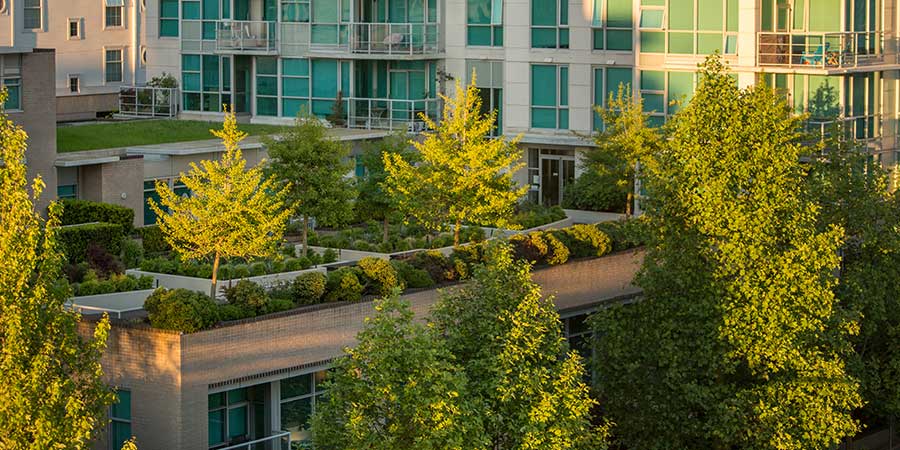Waterproofing for a green roof

Studies abound that green roofs reduce the effects of urban heat islands. They're also far more aesthetically pleasing than a basic, blacktop roof. Green roofs provide shade, comfort and a place to enjoy the greenery in an otherwise concrete jungle.
The answer to "Why a green roof?" seems rather straightforward, then. And, if you’re a waterproofing contractor, you’re likely to see more projects like these on the horizon. There is, however, some nuance to green roof projects. For instance, who is responsible for what? From a waterproofing perspective, you may want to consider the following…
Draw the line between waterproofing and the green layers
First of all, your installation ends before any green roof construction begins. The waterproofing layer is, in fact, usually the last layer to be applied before the green roof contractor gets to work.
Ensure that the type of waterproofing system you choose is suited for a green roof
A green roof system usually includes a root barrier to protect the waterproofing from aggressive plant roots that can penetrate the membrane.
Lay down a strong membrane
If you lay down a strong waterproofing membrane from the get-go, leaks may not become an issue, even under the most aggressive green roof roots. SILCOR® 900MP and SILCOR® 900HA liquid waterproofing membranes meet ASTM standard D624—Standard Test Method for Tear Strength of Conventional Vulcanized Rubber and Thermoplastic Elastomers. SILCOR® liquid waterproofing membranes can also endure long exposure times. This is crucial protection in case the green roof contractor experiences delays in installing the fabric, drainage or growth medium layers.